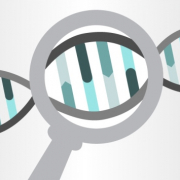Sequencing the enemy: the genomics of infectious diseases
It’s not just human genomes that interest us in healthcare – the genomes of infective organisms can help us identify, track and prevent infection
Whole genome sequencing (WGS) is a hot topic in the NHS at the moment, especially with the launch of the NHS Genomic Medicine Service this autumn, set to build on the foundations laid by the 100,000 Genomes Project.
But did you know that WGS has already had profound effects on NHS practices? And that existing procedures, and even the design of new facilities, are the result of knowledge gained from whole genome sequencing?
If that sounds odd, perhaps it is because when we talk about whole genome sequencing in the context of the NHS, we automatically think about human genomes. But we are far from the only species to have our DNA under the metaphorical microscope.
M. abscessus and cystic fibrosis
Mycobacterium abscessus is a type of nontuburculous mycobacteria (NTM) commonly present in soil, which can cause a variety of infections in humans, although it rarely affects healthy people.
In patients with cystic fibrosis (CF) NTMs are capable of causing lung infections; M. abscessus is especially difficult to treat because it is susceptible to few drugs, and some strains are multi-resistant.
It was long thought that infections were environmentally acquired and not transmitted between patients. Evidence from the 1990s and 2000s appeared to support this, with evidence of siblings with CF living together having unique NTMs.
But two research papers from the Infection Genomics Programme at the Sanger Institute in 2013 and 2016 indicated that some strains of M. abscessus have now become transmissible between patients, and that these strains are more virulent and becoming more drug resistant.
The authors performed phylogenetic analyses on the whole genome sequences of samples of M. abscessus isolated from patients with CF. Phylogenetic analysis compares the DNA sequences: the more similar they are, the more closely related the bacteria are and the more recently they diverged. Thus it would be expected that two environmentally acquired samples would be distantly related, and samples from infections which had been transmitted between patients would be more closely related.
The first study tested 168 samples from 31 adult patients who all attended the same centre between 2007-2011. They discovered two clustered outbreaks over this period, and were able to see mutations that occurred in one patient sample subsequently show up in other patients’ samples, strongly indicating transmission. This included mutations that conferred antibiotic resistance.
The second study compared sequences of more than 1,000 samples from 517 patients in the UK, US and Australia. Analysis revealed that the bacteria in samples from all three territories were highly related. Experiments in cell culture and mouse models indicated that these recently evolved strains are likely to be more virulent than environmentally acquired infections.
Impact on clinical practice
The precise mechanism of transmission between hosts is not yet understood. It is possible that it is indirect – meaning that the two patients do not have to meet face-to-face – but could be via aerosolised particles or contaminated surfaces, so that being in the same room after an affected patient could pose a risk to a person with CF.
These findings have quickly been incorporated into clinical practice in the NHS – implementing strategies to minimise cross-infection.
For example, the Royal Brompton Hospital’s Clinical Guidelines for Care of Children with Cystic Fibrosis states that: “Patients with M. abscessus complex will be kept in isolation on the ward, and seen only in [later] slots in clinic so that the room is not used again that day.”
The Cystic Fibrosis Trust’s interim guidance on M. abscessus infection prevention and control shows how this research will even have an effect on the way new hospitals are built: “Any new facilities for cystic fibrosis patients must take into account the potential for cross-infection with M. abscessus. This must include the provision of negative pressure rooms for both inpatient and outpatient care and adequate ventilation in other areas.”
This is far from the only example of whole genome sequencing being used in pathogens – we’ll be covering this area in more detail in an upcoming article written by a bioinformatician working in virology.
–









